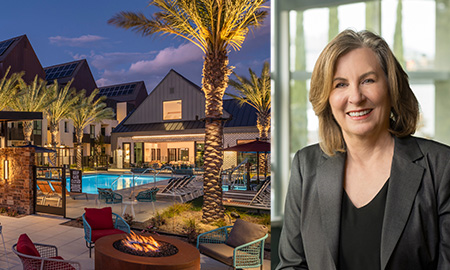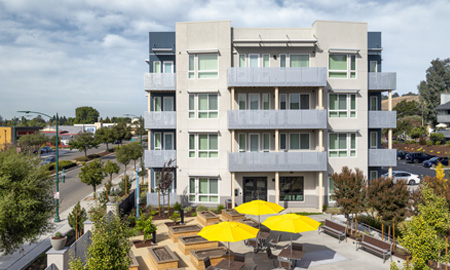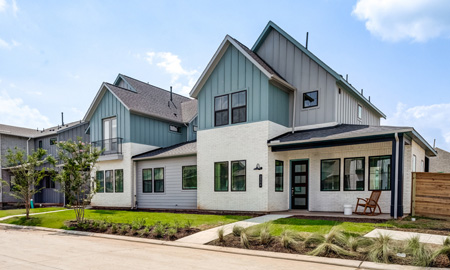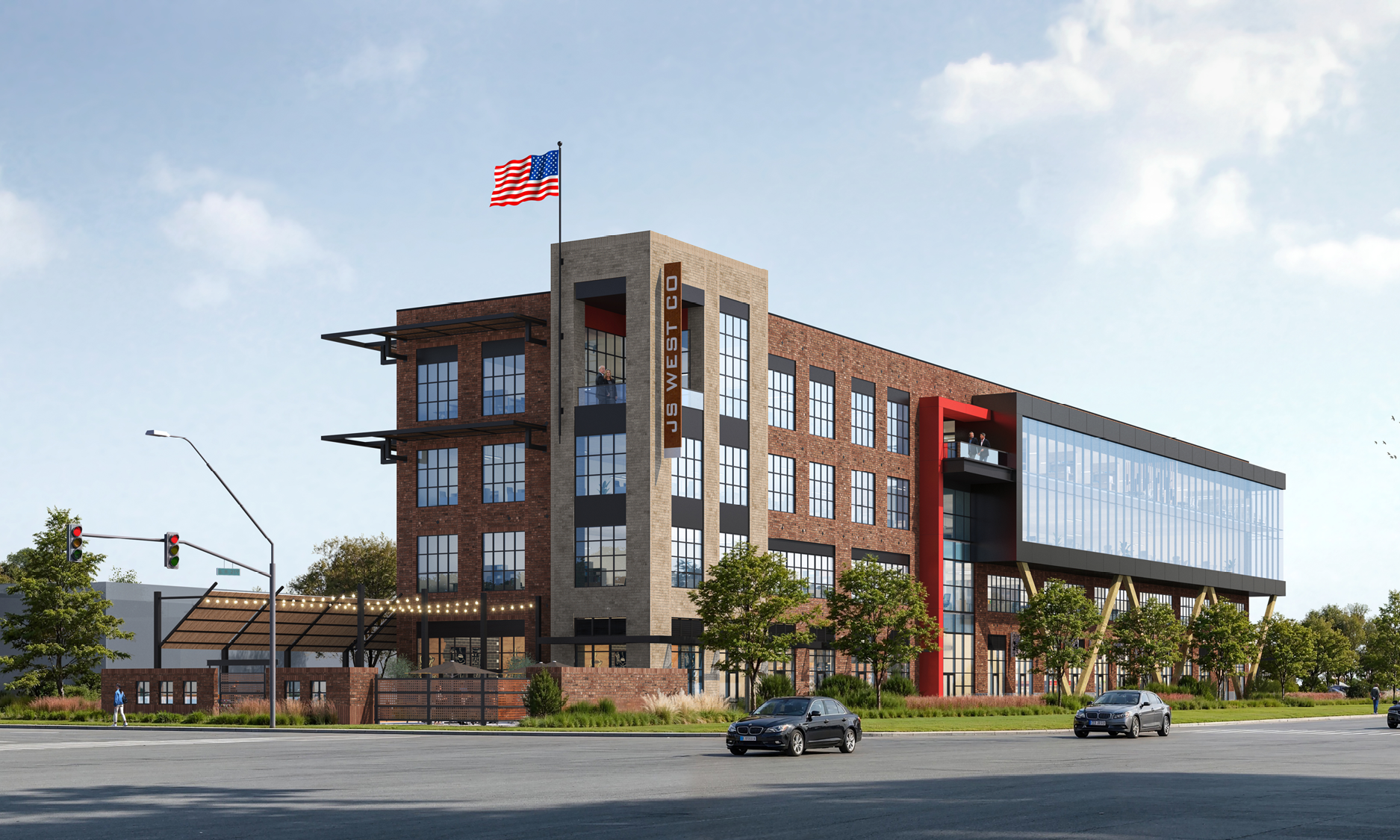From the common doors you touch on your way to take out the trash or to get some fresh air to receiving deliveries without the need for physical interaction. Through these challenges there is an opportunity to consider how we design multifamily buildings to support the health of residents from a fresh perspective.
UNIT SIZE OR SHARED AMENITIES?
To date, unit size has trended downward as the focus has shifted to fostering social interactions through thoughtfully designed community amenities. For example, small or no decks, particularly in for rent product, in favor of shared amenities provided opportunities to design more attainable housing and support resident interaction. But as we are experiencing, there are times when physical interaction must be restricted for a greater good. Looking forward, it will be important to re-consider how we define optimal indoor/outdoor space ratios to ensure that as many people as possible have access to private outdoor space. As we do so, it is equally important to avoid the trap of becoming overly introverted and isolated. For example, ensuring that unit decks overlook a common open space, providing both a connection to the building community and private outdoor space. Designs should also capitalize on opportunities to visually engage with the broader neighborhood context and street activity to further reduce a feeling of isolation.
HEALTHY BUILDINGS TECHNOLOGY
Community spaces will continue to be important as these spaces address our innate need to connect. The design opportunity is in how to design these spaces for maximum relevancy when facing threats to community health. Creating smaller, break away spaces within, ensuring ample sunlight, air circulation and purification systems, viral and bacterial resistant furnishings and fixtures materials as well as integration of touchless, automated door systems or sanitation stations provide an array of multi-faceted solutions.
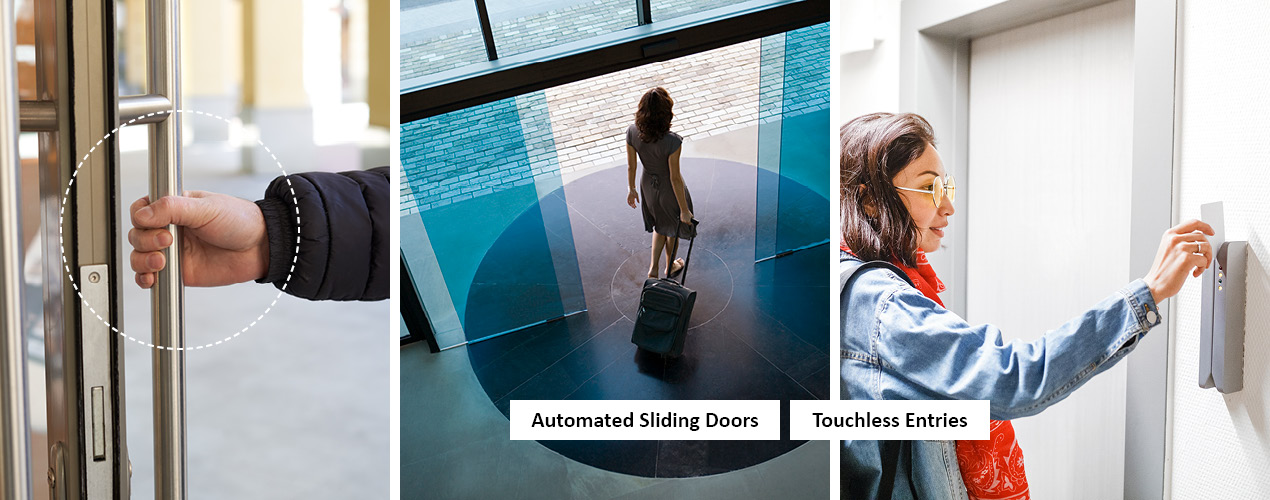
COVID-19 has accelerated trends towards increasing reliance on delivery services with a new emphasis on reducing the need for physical contact to facilitate drop-off and pick-up. Coded drop-box systems – previously seen as a nice perk – may become a must have amenity for potential residents.
WORK FROM HOME SOLUTIONS
Recently, we have seen an increase in the inclusion of co-working spaces within multifamily product. While COVID-19 has forced entire industries to transition to full-time, work from home operations overnight, the unique challenges of this time have made these co-working spaces temporarily irrelevant. This provides future design opportunities. In unit design, incorporating alcoves that can flex to a work-from-home space – or a learn-from-home space, as needed in the face of school closures – provides a space conscious solution. Additionally, re-thinking the design of co-working spaces in ways like the above discussion of community spaces provides solutions to maximize the utility of co-working spaces. For example, incorporating touchless entry points, air purification systems, viral and bacterial resistant furnishings and fixtures materials, and perhaps, moveable walls to allow for the creation of private, smaller spaces as needed.
RE-THINKING CO-LIVING
Co-living, another multifamily trend that was gaining traction, faces unique challenges. However, re-thinking the design of these units holds potential solutions. Some projects may have opportunities to provide private entries to the bedrooms as opposed to a common point of entry through the communal space. Alternatively, integrating touchless entry into the common areas provides a different solution, including touchless entry into key areas that can be hotspots for spreading illness, such as bathrooms. Touchless light and faucet fixtures as well as appliances further minimize the opportunity for contaminating shared surfaces. Air purification systems zoned by room are another consideration. Even outside of co-living communities, roommate situations are very common in the for rent multifamily market. Therefore, many of these same smart home technologies, which enables touchless operation of otherwise commonly touched surfaces, are highly relevant solutions in this market, too.
As we all do our part to flatten the curve, let us apply our collective human ingenuity to adapt existing buildings and design new buildings to better support our health and wellbeing at all times.



